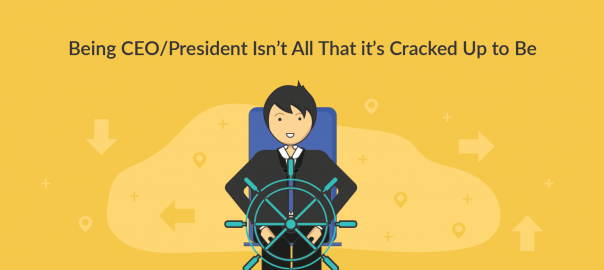We hear it all the time, one of the adages of entrepreneurship – work smarter, not harder. But what does that translate to, in our daily lives? Work less long, but get more out of it. But how do you accomplish that? Like many things, in abstract this idea seems difficult to achieve, but when broken down, it shows that there are many ways to improve your work style. Try putting at least one or two of these ideas into practice each day, and eventually you’ll become the master of your quality of work.
Avoid Distractions
Think about your typical workday. Do you allow yourself long stretches of time in which you can truly sink your teeth into an assignment, or do you tend to only work in small snatches of time between interruption after interruption? Are you constantly flicking back and forth between projects and your email or social media sites? Do your employees pop in often to ask questions or for advice? Make it stop!
Did you know that it takes the average person 15 minutes to recover from a distraction? That means that for a quarter of an hour you are floundering around, trying to put your mind back where it was before the interruption – and then you’re probably going to get interrupted again! Here are some ideas for minimizing distractions in the office:
- Let calls go to voicemail, and then answer them in one block.
- Have one or two dedicated times to check and respond to emails during the day, instead of checking them as they come in.
- Turn off alerts for incoming emails, messages, or notifications from social sites. Yes, this might mean turning off your phone, too.
- If your office uses instant messenger, turn it off or set yourself to “away” while you are trying to focus.
- Close your office door, hang a sign on your cubicle asking not to be interrupted, or if you’re really desperate, wear big headphones or pretend to be on the phone.
Organize & Prioritize
Too many people rush into the day without a clear plan of action, and it leads to frustration and wasted time as you figure out where to focus your efforts first. What are your goals for the day? What absolutely must get done, what do you need to make progress with, and what can sit on the backburner for a lull? Set aside some time at the end of the workday to structure the coming day. For some people, this means implementing sophisticated project management software; for others this means writing out a long to do list and scattering post-it notes across their desk. Some may even prefer a simple Gantt chart for some visual guidance. Whatever your preference, if you’re going to skip any part of your day, definitely don’t skip the ten or fifteen minutes you spend organizing and prioritizing your day.
Don’t Multitask – Work in Parallel
Despite what you may believe, just face it: you can’t multitask. Anyone who has ever tried to talk on the phone while responding to emails understands. What we call “multitasking” isn’t truly doing two (or more – shame on you!) things at once at all; it’s just your brain switching quickly between two things over and over. Not only is this bad for your focus – remember how it takes 15 minutes to recover from a distraction? – but it also wears down on your brain, making you tired more quickly.
So, what can you do if not multitask? Instead, try working in parallel. This technique is already used heavily by teams of people working on the same material – think design teams or programmers – but you can take advantage of it, too. Do some of your projects get sent back and forth? Do those projects first, and while waiting for others to send them back, work on other things. This means less frustrated waiting time for you and your coworkers, and more time getting things done. Alternatively you can try real-time collaboration with your team or peers, another way to work smarter and save time.
Learn How Long Tasks Take
Once you eliminate or control your distractions, get to know your schedule and your way of working. Over time, you should see patterns emerging – it always takes you at least three hours to complete this kind of report, whereas another project you can whip out in thirty minutes. How would you know that if you hadn’t lassoed in those interruptions? This is useful not only for blocking out a schedule for yourself, but also for knowing when you have to say no to a job or a project.
Delegate: A Must Have Skill to Work Smarter
Everyone knows delegation is important, but for some reason too many people hang on to doing tasks that others could complete more efficiently or just plain better. Think about why you do certain tasks – if the answer is simply “because I always have,” you need to think hard about whether that task really ought to belong to you. Certain tasks – especially tedious ones, or those that someone else could easily be trained to take on – are no brainers.
Constantly Improve Your Processes
Change is good, especially when it translates to getting things done with more efficiency, more expediency, or less cost. The last company I worked for rewarded process improvements. Even if yours doesn’t, you should always be on the lookout for ways to do things better – it could mean you have an easier time managing your workday, or you might even get a raise.
Acknowledge the Point of Diminishing Returns
This is perhaps the biggest point behind the adage “work smarter, not harder” – there is a point at which working more does not mean you are getting more done. Productivity declines, and it can be more and more frustrating to reach the same goals you were hitting with ease before. This doesn’t mean you’re doing a bad job – it might just mean that you need to focus on a new strategy, or even take a break and return to the task fresh. If you acknowledge that such a point exists, you will face less frustration at work.
Listed above are some practical things you can do to work smarter instead of harder. Got more awesome tips? Do share them in the comments and if it’s a truly awesome one we’ll add it to the article.
Adrienne Erin is a blogger and writer. When she’s not blogging about tech and social media, you might find her practicing her French, whipping up some recipes she found on Pinterest, or obsessing over vintage postcards and stamps.






One thing that I am going to put into practice right away is learning more about how long something takes. Also, thanks for the reminder on shutting notifications off.
few weeks ago i read book “eat this frogg” and i must say the main thing which we must to remember is do the hardest thing as first
Some really useful tips here. When you add up how much time all of these ‘little’ distractions add up to each day it is amazing just how much time we are wasting. I will be putting some of your tips to use right away, i really need to eliminate several distractions that lower my productivity.
Thank you for the excellent article!
Awesome guest post, it was totally helpful 🙂
It Makes our job easier 🙂
[…] presents 7 Ways to Work Smarter, Not Harder posted at Creately Blog | Diagramming Articles and How to Draw Diagram Tips, saying, “Article […]